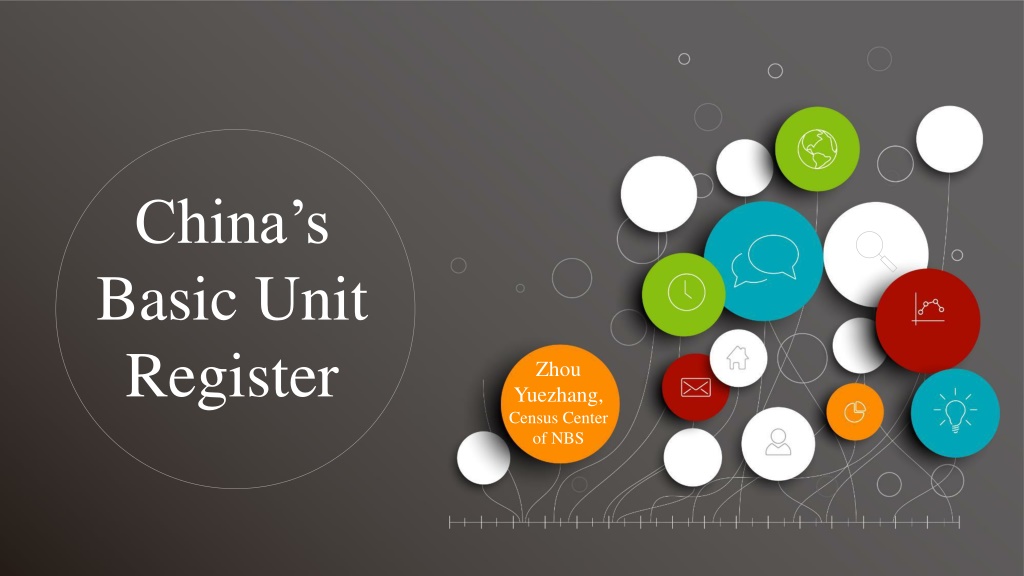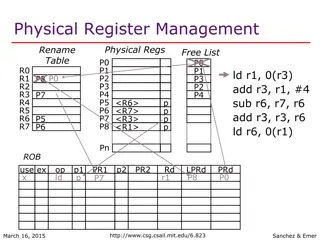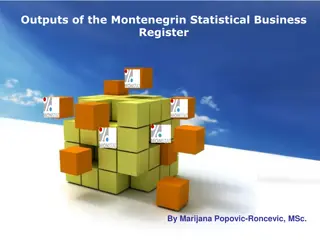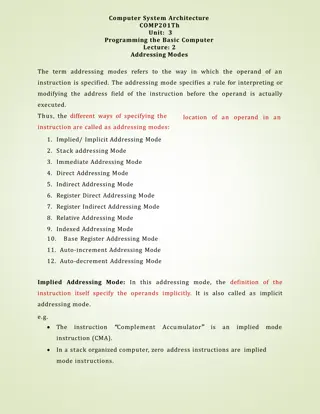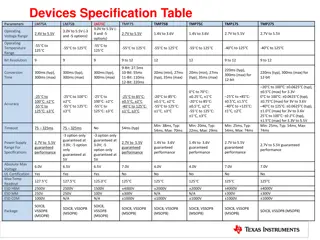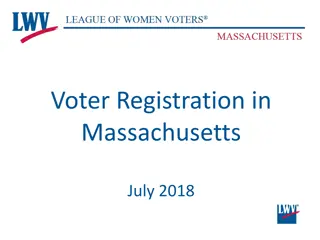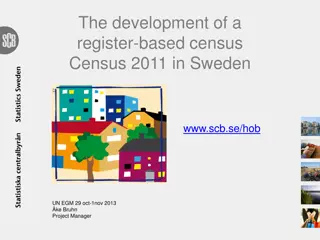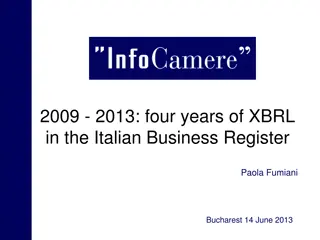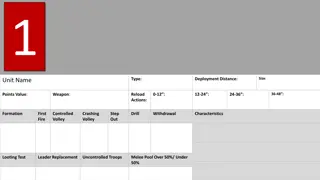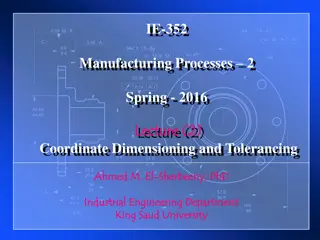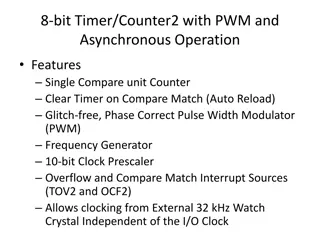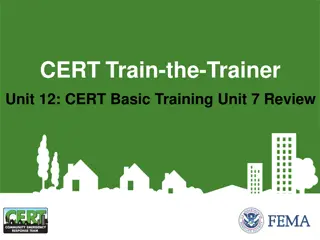Understanding China's Basic Unit Register
China's Basic Unit Register is a database containing essential information of legal entities and industrial activity units engaged in economic and social activities in China. It plays a crucial role in economic statistics, providing data on economic activities, social impact, and statistical integration. The Register covers a wide range of information such as unit code, legal representative, industry, registration type, and more. Management principles focus on maintaining data quality and balancing precision with cost efficiency in statistical surveys.
Download Presentation

Please find below an Image/Link to download the presentation.
The content on the website is provided AS IS for your information and personal use only. It may not be sold, licensed, or shared on other websites without obtaining consent from the author. Download presentation by click this link. If you encounter any issues during the download, it is possible that the publisher has removed the file from their server.
E N D
Presentation Transcript
Chinas Basic Unit Register Zhou Yuezhang, Census Center of NBS
Definition What is a basic unit Register? It refers to the database of basic information of all legal entities and industrial activity units engaged in economic and social activities in China. (full name: Basic Unit Register in National Statistical System)
The corporations is not covered by the Register, but the domestic part of a foreign multinational unit is included by the Register. overseas part of China's multinational Definitions Domestic Covering all units that are having or may have economic activities in the future, and retaining units that have had economic activities in the past. Social activities often affect the economy, which is also the focus of economic statistics and the Register. Economic and social activities Legal entities and industrial activity units are the core of the Register. While, most self-employed households are not the management of the Register since they are fast- changing and small-scale. Unit objects of routine Several in definitions concepts The information entities and industrial activity units engaged in economic and social activities in China. database of all basic legal Unit code, name, legal representative, address and administrative division, industry, registration type, organization type, date of open, operation status, and the relationship between the legal entity and its subordinate industrial activity units, and employees, as well as income and expenditure of the entity, etc. of contact information, Basic information
Functions Statistics on the sampling frame of survey Statistical integration Statistics on product in unit What are the functions of the Register? China's economic statistics is carried out for national economic accounting and statistics on various economic fields, and the respondents of statistics in various economic fields are statistical units. The Register is the basic information database of the statistical survey system, in which the respondents or potential respondents of economic statistics and a large number of their related characteristic data are timely maintained and comprehensively covered. In addition to databases that are provided with dynamical maintenance function, the Register also contains static databases and data snapshots, which takes on more functions.
Management Principles The statistical system should seek a balance between the it s design preciseness and survey cost. Simplify the business requirements as much as possible on the premise of meeting the statistical purpose of Register. Equal attention to the statistics of legal entities and industrial activity units shall be paid. That is the direction of economic statistics development and reform in the future. Core concern of the Register is economic facts. All work and data quality control should focus on the statistics of economic activities. Metadata must be definite and detailed. That is the basis of data quality. What are the principles of Register management and maintenance? Considering the functions of Register, the needs of development and reform of statistical system, and the maintenance cost, the construction, management and maintenance are based on the following principles:
Units Relationship between the legal entity and industrial activity units Industrial activity units Organization types Legal entities Organization that has the right to own assets, assume liabilities and independently engage in social and economic activities (or trade with other units). It should meet all the three conditions: Establish legally with its own name, institutional framework and place, and able to bear civil liability independently; Own assets or funds independently (or be authorized to use), assume liabilities, and have the right to sign contracts with other units; Have an account including a balance sheet, or be able to prepare an account as needed. Enterprise Authority Public institution Social organization Private non-enterprise organization Foundation Villages and neighborhood committee Specialized farmers' cooperative Rural collective economic organization Other types An organization or part of that organization which is engaged or mainly engaged in one social economic activities in a specific location. It should meet all the three conditions: Engaged or mainly engaged in one social economic activity in a specific location; Organize production activities or operating activities relatively independently; Be able to provide income, expenditure and other related information. The corresponding relationship between the two levels is needed to both establish and maintain, so as to accurately split the statistical data obtained from legal entities into industrial activity units, and thus splitting the economy into different regions and industries.
Units Enterprise whose register and operation places are different. Units without information Enterprise group One household with many licenses Units with business certificate but no business license How to deal with the special unit? Due to the diversity and historical complexity of social and economic development, there are a variety of special situations, which are not easy to identify during survey. Unit regarded as a legal entity Units with special purpose but no actual economic activities
Indicators Management indicator Contact indicators Statistical and correlation indicators Administrative indicator Unified social credit identifier Detailed name Legal representative Registration type Holding situation Organization type Date of establishment Accounting standard category Serial number Code in NBS Mark of special unit Status Loading and modification time Contact information of the preparer Correlation with reporting agent Outdated indicators Date of opening Operating status Main business activities Industry code Enterprise group situation Relationship between the legal entity and industrial activity units Employees and operating revenue Qualification and business mode Office address Registration address Administrative division code Contact number Building and coordinate What are the main characteristics of the unit? It is mainly designed according to the Statistical Report System for Basic Units.
Statistical institutions at or below the provincial level obtain administrative records of the preparation, civil affairs and taxation departments at the same level every six months. Sources Non-enterprise registration Tax registration Provincial statistical agencies share enterprise registration information every day, business exception list and enterprise information of which are serious illegal and untrustworthy every quarter, and enterprise annual report information every year to the same-level market supervision department. Enterprise registration How to get the data? Store the most original information; Evaluate data quality and availability; Pre-process and convert into statistical caliber indicators. Administrative data application Government departments mainly includes market supervision, staffing, civil affairs and taxation departments. Cooperation departments in different regions may been expanded. All kinds of statistical survey data. Economic census results The results of a monthly survey of a set of table for enterprises and a quarterly or annual sample survey of "non the above four" sample units conducted by statistical agencies. Other statistical survey data. Statistical data
General process Updating Loading Preprocessing Integration Comparison Survey Audit, evaluation and quality control
Maintenance work System management Metadata management Quality control Data processing Conventional audit Annual audit Quarterly audit Quality inspection Management indicator monitoring Log management Data collection Field survey Modification for information entry Unit location changing Back-up Analysis and application Statistical report revision Metadata adjustment Adjustment of administrative division code Intelligent coding of industry code User authority management Function optimization System operation and maintenance Information sharing monitoring What are the routine maintenance work? Statistical agencies at all levels undertake different work.
Quality control Timeliness Comprehen- siveness What are the concerns of data control? Pre-event quality control: Ways and means of survey Quality evaluation of administrative and statistical data. Metadata management quality control in process: Process monitoring User operation and log monitoring Immediate audit and batch audit Remarks management Data monitoring Ex-post quality control: Quality inspection Comprehensive assessment ... Accuracy Consistency Dimensions of data quality Completeness Comparability
Development direction Improve the statistical system 01 Expand data sources 02 Means to improve data quality Enrich technical means 03 Improving data quality is the key to manage and maintain the Register. Efforts are proposed in the following aspects Enhance supervision requirements 04
